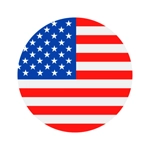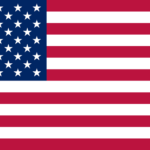How the Psychology Behind Packaging Design Can Transform Your Brand
Have you ever picked something off a store shelf just because it looked cool or felt nice in your hands? You’re not alone! Studies show that people decide how they feel about something in just 7 seconds, and most of the time, they do it just by looking at it. That’s the power of how our brain works with what it sees. This is called the psychology behind packaging design. It means using colors, shapes, and styles that make people feel something, like excitement, trust, or even hunger when they see a product.
Table of Contents
ToggleWhen a package looks attractive, clean, or fancy, like Rigid Box, we start to believe the product inside is just as good. That’s why smart companies use design tricks to grab your attention and make you want to buy.
What Is Packaging Design?
Packaging design is how a product is wrapped or boxed. It includes the colors, pictures, shapes, fonts, and even the material (like plastic, paper, or cardboard). Good packaging protects the product, but it also does more, it talks to the customer without using words!
Understanding the Psychology Behind Packaging Design
Psychology is the study of the mind. It helps us understand how people think, feel, and make decisions. Companies use psychology in their packaging to make people feel excited, happy, or safe about buying their products.
This is called the psychology behind packaging design, and it can change how people see your brand. However, if you want the Best Custom Boxes, look no further than PackagingDot, as they are the best Product Packaging Company.
How the Psychology Behind Packaging Design Influences Our Choices
Let’s look at some of the ways packaging affects our feelings:
1. Color Makes a Big Impact
Color is one of the first things we notice. Different colors make us feel different emotions. For example:
- Red feels exciting and bold
- Blue feels calm and safe
- Yellow feels happy and cheerful
- Green feels natural and healthy
- Black feels fancy and powerful
If a snack package is bright red and yellow, it may feel fun and tasty. If it’s green and brown, it might feel healthy and natural.
2. Shape and Size Matter
The shape of a package can tell us a lot. A tall, thin bottle might look fancy. A round box might feel friendly. Unique shapes also help us remember the product.
Even how the box opens makes a difference. If it’s easy to open and close, people enjoy using it more.
3. Touching the Package (Texture)
The way a package feels is also important. A soft, smooth box might feel high-quality. A rough package might feel natural or homemade. Some packages even have shiny or bumpy parts that make them more fun to touch.
4. Pictures and Fonts
Fonts are the style of letters. Big, bold fonts look strong. Fancy, curly fonts feel elegant. Fun, playful fonts feel young and exciting.
Pictures and graphics also tell a story. A cereal box with a cartoon character is made for kids. A package with real food pictures might be for adults who want something healthy.
What Does Packaging Tell Us About a Brand?
A brand is how a company wants people to see them. It’s the name, logo, colors, and feelings connected to a product. Packaging is one of the biggest ways brands show their style.
Let’s look at some examples:
- A chocolate brand might use gold and dark brown colors with shiny wrappers to feel fancy and rich.
- A juice brand might use fruit pictures and bright green colors to feel fresh and natural.
- A tech company might use silver, black, and clean lines to look modern and smart.
That’s the psychology behind packaging design, using packaging to send a message about who the brand is.
Why Good Packaging Is Good for Business
If people like how a package looks and feels, they’re more likely to:
Try the product
Remember the brand
Tell friends about it
Buy it again
When a brand uses the right design, people trust it more. It makes the product feel worth the money. That’s why packaging is not just about looking nice, it helps the business grow.
Real-Life Examples
Apple
Think about an Apple iPhone box. It’s smooth, white, and opens slowly. It feels special, like opening a gift. That’s on purpose! Apple uses simple, clean designs to show their products are modern and high-quality.
M&M’s
M&M’s packages are bright and colorful with playful fonts. They look fun and exciting, which is perfect for a candy brand.
Lush Cosmetics
Lush uses black paper packages with handwritten-style fonts. They look natural, handmade, and good for the Earth. That’s the message Lush wants people to feel.
How Can Brands Use Psychology in Packaging?
If a company wants their product to stand out, they can use these smart tips:
1. Know Your Audience
Is the product for kids, adults, or families? Bright colors work well for kids. Simple designs may work better for grown-ups.
2. Choose Colors Carefully
Pick colors that match your brand’s message. A sports drink may use red and blue for energy. A bedtime tea might use soft blues and purples for calm.
3. Make It Easy to Read
Use clear fonts. People want to know what’s inside and why they should buy it. If the words are too small or confusing, they may skip it.
4. Be Unique
A fun shape, pattern, or feature can help your product stand out on the shelf. Make people want to pick it up!
5. Think About Touch
Use materials that feel nice. A minor detail like a soft label or shiny finish can make a big difference.
Summary
The way a product is packaged can change everything. It’s not just about holding the item, it’s about making people feel something. With the right design, a brand can look friendly, cool, fun, healthy, or fancy. When companies understand the psychology behind packaging design, they can turn a simple box or wrapper into something powerful. It can help their brand grow, stand out, and be loved by customers. So the next time you pick up a cool-looking snack or toy, think about it. Why did you grab that one? Chances are, the package had a lot to do with it!







